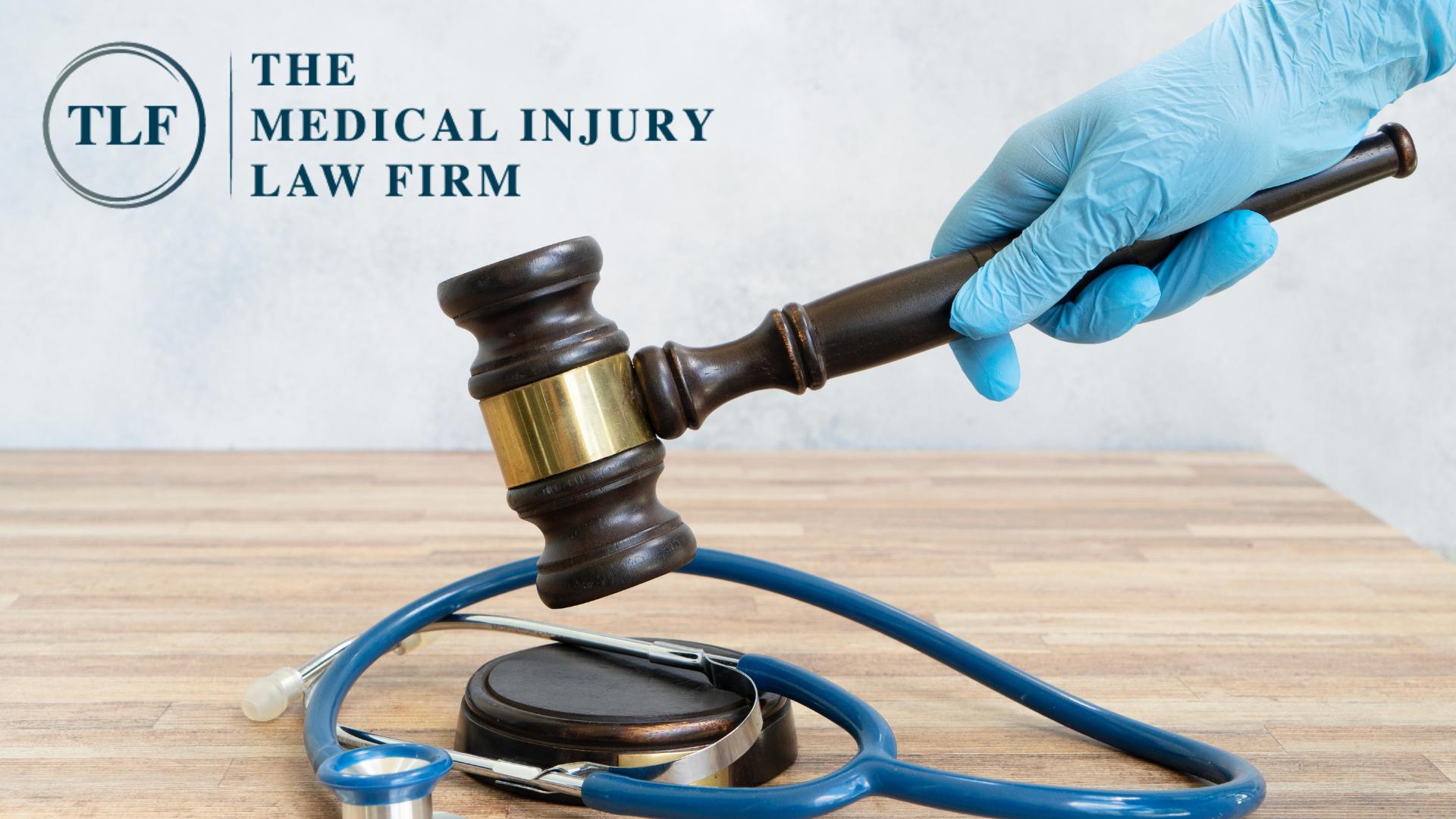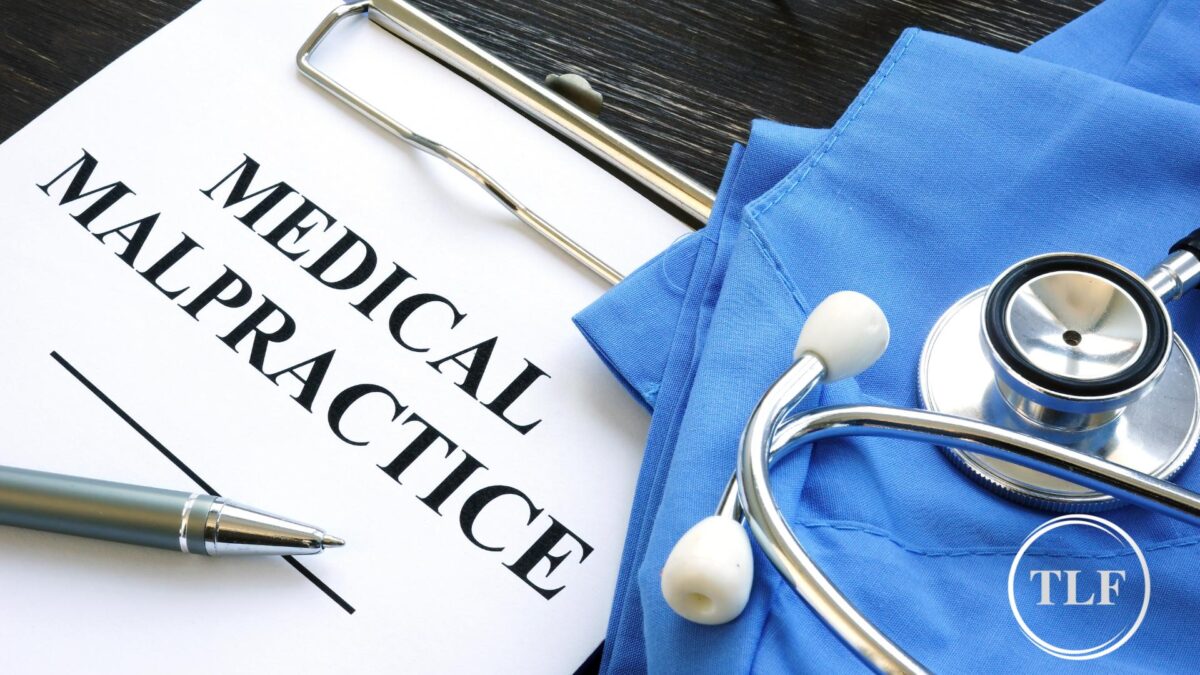Whenever you undergo a medical procedure or visit a medical professional, you put your life in their hands and trust that they have your best interest at heart. When that healthcare professional acts negligently and fails to comply with their duty of care and you are injured as a result, they’ve committed medical malpractice.
If you or a loved one has been injured due to the negligence of a healthcare provider or other medical professional, you may have the grounds to pursue legal action against them. You need the best legal representation when facing a medical malpractice case. The Ohio and Northern Kentucky medical malpractice attorneys at TLF: The Medical Injury Law Firm have been successfully representing clients in the area for decades now and are ready to represent you, too.
Below, our medical malpractice attorneys will explain what is considered a malpractice case and how you can receive compensation for your injuries.
What is Considered Medical Malpractice?
Medical malpractice (or medical negligence) is when a medical professional does not use reasonable care in preventing harm or injury to another. Those working in the medical field are held to specific standards of care they must uphold. If the doctor, nurse or other medical professional failed to meet that basic standard, they may have acted negligently.
Not all medical errors can fall under medical malpractice. Just because a healthcare provider made a mistake doesn’t mean they acted negligently. In order to prove negligence, the patient must show that their doctor or medical provider ignored their duty of care and, in doing so, caused their injuries. If your doctor simply made a mistake but followed the required standard of care, you cannot pursue a medical malpractice lawsuit. It’s essential to show that injuries directly relate to their actions or inactions.

Common Types of Medical Malpractice Cases
Medical malpractice can happen anywhere and anytime while you’re receiving medical treatment. The most common types of medical malpractice include:
- Failure to treat: This malpractice occurs when the patient has been diagnosed with an illness but did not receive the proper medical treatment or any medical treatment at all. This can include not following up with the patient and discharging a patient early.
- Surgical errors: Surgical error negligence can happen due to a variety of reasons, some of which include:
- Medical devices or equipment left in the patient
- Performing the incorrect procedure
- Organs, nerves, or tissues were damaged but were avoidable
- Unnecessary surgery
- Wrong-site surgery
- The instruments were not properly sterilized
- Aftercare was not performed or wasn’t performed correctly
- Birth injuries: Medical malpractice claims typically filed against OBGYNs are for brain injuries, shoulder dystocia, nerve damage, and cerebral palsy. All of the listed injuries are avoidable and commonly occur due to medical negligence during the labor and delivery process.
- Misdiagnosis: This type of medical malpractice is very common. When a healthcare provider fails to diagnose a patient, they can incorrectly treat them or prescribe the wrong medication. Some misdiagnosis cases are so severe that they lead to death. To be considered negligent, the doctor must have missed something that a reasonable doctor would have caught.
- Delayed diagnosis: A healthcare provider taking too long to diagnose a patient can lead to a worsening medical condition. A delayed diagnosis can happen when the doctor overlooks symptoms or doesn’t perform necessary tests. This can be difficult to prove, but you could have a case as long as you have medical records showing that the medical provider ignored blatant symptoms.
- Anesthesia errors: If the anesthesiologist makes a mistake, the patient could suffer from brain or spinal cord injuries, wake up during a procedure, experience intense pain, or even die. Malpractice can also occur if the wrong anesthesia was administered or the anesthesiologist failed to properly monitor you during the procedure.
- Prescription errors: While these are often related to a misdiagnosis, that isn’t always the case. Prescription errors can happen when the wrong drug is filled or ordered. Taking incorrect medication can have dire consequences, especially if mixed with medications that shouldn’t be. Unfortunately, patients trust doctors and pharmacists when receiving medications, so they cannot know they are mixing a potentially lethal combination of drugs.
- Failure to prevent or treat infections: If the hospital conditions are unsanitary or your medical professional doesn’t exercise proper hygiene, you could be at risk of developing an infection. If your infection isn’t timely recognized and treated correctly, you could develop sepsis, which can be fatal.

What is Needed to Prove Medical Malpractice?
Four elements must be proved to establish negligence to pursue a medical malpractice lawsuit successfully. Known as the Four D’s of Negligence – Duty, Deviation, Damages, and Direct Cause, these four elements are what every medical malpractice lawsuit hinges on.
At TLF: The Medical Injury Law Firm, we have medical professionals on staff that assist with medical malpractice cases. Our medical team will evaluate your records and help us build an even stronger case against the healthcare professional that caused your injuries.
Doctor-Patient Relationship Existed (Duty of Care)
Duty of care refers to the legal responsibility that healthcare providers and other medical professionals are required to uphold. Everyone in the medical industry must meet the standard duty of care, and if they cannot, they should refer their patient to a specialist. This duty of care protects the patient and gives them peace of mind that their doctors and nurses have their best interests at heart.
In order to establish a duty of care, there must be a doctor-patient relationship. The doctor-patient relationship includes anyone that assisted in the medical treatment and care that the patient received.
There Was a Breach of the Standard Duty of Care
No matter what type of personal injury lawsuit you pursue, they all require a negligent act that leads to injury or death. The same goes for a medical malpractice suit.
A doctor-patient relationship must establish a standard of care. Once that relationship has been established, they have deviated from that standard of care if they do not provide the same level of care that an equally qualified medical professional would provide in the same or similar circumstances.
Deviations or breaches of the standard of care include failure to diagnose, misdiagnosing, surgical errors, and birth injuries.
The Breach of Duty Was the Direct Cause of Harm
The direct cause of harm is probably the most crucial element in a medical malpractice case. The injuries that you sustained must be in direct relation to the medical care (or lack thereof) that you received. While some cases are easy to prove, like a surgeon amputating the wrong limb, most cases are challenging. This is why hiring an experienced medical malpractice attorney is key.
The doctor or other medical professional will do whatever they can to turn the blame back on you by saying your lifestyle or pre-existing health conditions caused the injuries. To counter these accusations, your attorney will work to prove that your doctor’s medical negligence led to your injuries.
The Harm Lead to Physical, Emotional, and/or Financial Damages
The final element to prove in a medical malpractice claim is that the medical error that led to your injuries resulted in actual damages. These damages don’t have only to be physical or financial; they can also be emotional and mental damages.
For example, if your doctor performed the wrong surgery, you could need additional surgeries to fix the errors. Not only can more surgeries be expensive, but they can cause you to miss work. Recovering from medical procedures is never easy and can affect a person’s mental health, as well. This is why damages aren’t always physical in nature. You should be compensated for your pain and suffering, as well as lost wages and more.

How a Medical Malpractice Attorney Can Help Prove Medical Negligence
Medical malpractice lawsuits are extremely complex. The attorneys hired by medical professionals and hospitals will fight aggressively against these claims for their clients. In addition to the health care attorneys, you must also worry about the malpractice insurance companies that insure the doctors and hospitals.
Don’t let the medical professional or their attorneys keep you from pursuing a malpractice case. If you were injured due to the negligence of a healthcare provider, chances are you aren’t the only one they have hurt. When pursuing legal action against negligent healthcare providers, hiring an experienced medical malpractice lawyer to handle your fight is critical.
Damages That May Be Recovered in a Medical Malpractice Case
The damages you can be awarded for a medical malpractice case include economic, non-economic, and in some cases, punitive damages. Economic damages involve calculated financial losses, such as lost wages or medical bills. Non-economic damages are difficult to quantify since they vary from case to case. Punitive damages, on the other hand, are used specifically as a means to punish the defendant for gross negligence.
The most common economic damages that you can be awarded from a medical malpractice suit include:
- Lost wages
- Past and future medical expenses
- Loss of earning capacity if you were unable to return to work
- Durable medical equipment
- Home health and mobility aids
- Any other financial losses caused by your injuries
The non-economic damages that you can receive from medical malpractice may include:
- Mental anguish
- Pain and suffering
- Loss of consortium
- Loss of enjoyment of life

Not Sure If You Have a Valid Medical Malpractice Claim? Call the Ohio and Northern Kentucky Medical Malpractice Attorneys at TLF: The Medical Injury Law Firm Today
If you’re unsure whether you have a viable medical malpractice claim, contact the attorneys at TLF: The Medical Injury Law Firm today. We will evaluate your case and determine what legal actions you can pursue. Our attorneys have recovered over $100 million for injured victims and families and are ready to do the same for you. Schedule a free initial consultation by calling our toll-free number (800) 698-4054 or completing our online form today.

